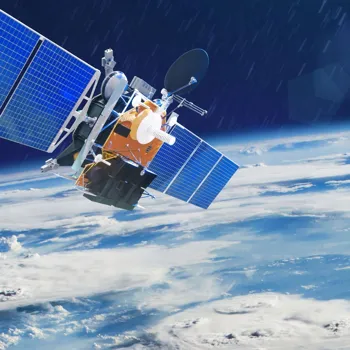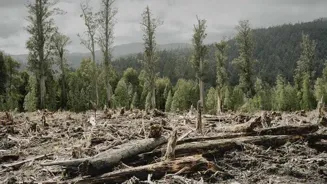Unveiling how tech aids climate change understanding - read on to uncover the role of gadgets in this crucial mission
Climate change, a topic we hear about almost daily, can feel overwhelming. For many
years, predicting future climate patterns felt like a game of chance. Now, thanks to advancements in technology, we are slowly but surely getting a clearer picture of what the future holds.
Scientists are leveraging various tools and techniques to gather data, analyse trends, and develop more accurate climate models. These tools are helping us understand the complexities of our planet's climate system and are providing invaluable insights for policymakers and communities alike.
From satellites orbiting the Earth to supercomputers crunching numbers, technology is proving to be a powerful ally in the fight against climate change. This helps us to take necessary precautions at right time.
Sophisticated satellite systems revolutionize climate science monitoring
One of the most significant contributions of technology to climate science is the development of sophisticated satellite systems. These satellites act like eyes in the sky, constantly monitoring various aspects of the Earth's climate.

They track changes in ice cover, measure sea surface temperatures, monitor deforestation, and even detect greenhouse gas emissions. The data collected by these satellites provide a global perspective of climate change, something that was impossible to achieve with ground-based observations alone.
For example, satellites equipped with radar technology can measure the thickness of ice sheets in Greenland and Antarctica, providing crucial information about the rate of ice melt.
Similarly, infrared sensors can track the movement of clouds and monitor changes in vegetation cover, helping scientists understand the impact of climate change on ecosystems. This comprehensive data helps scientist to understand the change in environment.
Technology advances climate models for better future living
Another critical area where technology is making a difference is in the development of advanced climate models.
These models are complex computer programs that simulate the Earth's climate system, taking into account various factors such as solar radiation, atmospheric composition, ocean currents, and land surface processes.
By running these models, scientists can project how the climate is likely to change under different scenarios, such as different levels of greenhouse gas emissions. The accuracy of these models depends on the availability of high-quality data and the computational power to process that data.
Supercomputers, with their ability to perform trillions of calculations per second, are essential for running these complex climate models. The more data we feed into these models and the more powerful the computers we use, the more reliable the projections become.
This would help the future generations to live a better life.
Various technologies aiding climate understanding: satellites, sensors, drones, data analytics
In addition to satellites and climate models, a range of other technologies are also contributing to our understanding of climate patterns. For instance, sensor networks deployed in oceans and forests are providing real-time data on temperature, humidity, and other environmental variables.

Drones are being used to survey remote areas and collect high-resolution images of glaciers, forests, and coastal areas.
Advances in data analytics and machine learning are enabling scientists to extract valuable insights from large datasets, identify patterns, and make predictions about future climate trends.
For example, machine learning algorithms can be used to predict the likelihood of extreme weather events, such as heatwaves, droughts, and floods. All these technologies and gadgets are contributing in a huge manner.
Citizen science empowers public in climate research with technology
Furthermore, technology is empowering citizens to participate in climate research and monitoring. Citizen science initiatives are leveraging smartphones, apps, and online platforms to collect data on weather patterns, air quality, and other environmental indicators.
This data is then shared with scientists, helping them to validate their models and improve their understanding of local climate conditions. For instance, people can use a simple app to report the presence of invasive species in their area or to document changes in the timing of plant flowering.
These citizen science projects not only provide valuable data but also raise awareness about climate change and empower individuals to take action. This is a team effort.
Technology advancements key to enhancing climate change mitigation
Looking ahead, further advancements in technology will undoubtedly enhance our understanding of climate patterns. Quantum computing, with its potential to solve complex problems that are currently intractable, could revolutionize climate modelling.
Artificial intelligence could be used to develop more sophisticated early warning systems for extreme weather events. The Internet of Things could enable the creation of smart cities that are more resilient to climate change.
As technology continues to evolve, it will play an increasingly important role in helping us understand, predict, and mitigate the impacts of climate change. This would help us to mitigate the situation.










